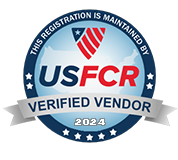Leveraging Alert Enterprise Visitor Management to Meet CTPAT Physical Access Control Requirements
November 18, 2024

As the digital age progresses, ensuring robust supply physical security and access control has become more critical for companies in the trade community. Global supply chains are more complex and interconnected than ever before, and as supply chain security threats evolve, businesses face increased risks related to theft, sabotage, cybersecurity, terrorism, and operational disruptions. One of the best ways to achieve physical security and access control for your company is by employing Alert Enterprise Visitor Identity Management (VIM) software, which offers a robust solution that seamlessly aligns with the Customs Trade Partnership Against Terrorism (CTPAT) security requirements.
The Customs Trade Partnership Against Terrorism (CTPAT) program is a voluntary, public-private sector partnership run by U.S. Customs and Border Protection (CBP). It aims to improve U.S. supply chain security against terrorism, smuggling, and other threats. Trade community businesses, whether exporters, importers, or logistics providers, certified in CTPAT must meet specific security program standards and undergo regular audits and compliance verifications.
While CTPAT is a U.S. initiative, it involves a wide range of countries, as global supply chains require international cooperation to ensure security. The countries most involved in CTPAT membership are typically those importers and exporters with significant trade relationships with the United States, including Canada, Mexico, China, and India.
In this article, we will detail how Alert Enterprise VIM aids in fulfilling these CTPAT prerequisites and how your company can benefit from complying with CTPAT’s Physical Access Control requirements to increase supply chain security.
Seamless Identity Verification
Under the CTPAT eligibility requirements and guidelines, ensuring positive identification of all individuals entering a facility—whether they are employees, visitors, vendors, or service providers—is a critical security measure to help eliminate vulnerabilities within the global supply chain. This requirement is designed to establish a clear and verifiable record of all physical access — everyone who enters or exits secure areas — thereby preventing unauthorized access and physical security threats that could compromise the integrity and security of operations.
The process of positive identification involves verifying the identity of individuals through reliable methods such as employee identification badges, biometric identification systems, proximity key cards, codes, and keys to validate identities. By applying this level of procedural security and scrutiny at every entry point, companies can effectively monitor and control who has physical access to their facilities, ensuring that only authorized personnel are granted entry to secure areas.
By enforcing positive identification across all secure area entry points, companies increase their overall threat awareness and are better equipped to monitor potential security risks and vulnerabilities in real-time, allowing them to take immediate action if something suspicious arises. Moreover, this approach helps ensure compliance with CTPAT’s security practices criteria and demonstrates a company’s commitment to safeguarding its assets, employees, and supply chain against potential threats.
Alert Enterprise VIM provides an effective solution by offering a comprehensive and automated system for identity verification.
Dynamic Access Control
CTPAT mandates that access to sensitive and secure areas must be limited based on job description or assigned duties. This fundamental security measure minimizes risks associated with insider threats, unauthorized actions, and physical security breaches. By ensuring that only those with a legitimate need can access these secure areas, CTPAT helps companies protect valuable assets, intellectual property, information technology and information. This measure also enhances accountability, reduces the potential for operational disruptions, and ensures compliance with both internal policies and external regulatory requirements. Ultimately, it supports the broader goal of maintaining a secure and resilient global supply chain.
While this level of access control may seem daunting, Alert Enterprise visitor management makes it easy. Alert Enterprise delivers out-of-the-box connectors with industry-leading physical access control systems (PACS) allowing role and policy-based access privileges to be assigned to each visitor, contractor and employee. This mitigates vulnerabilities by applying stringent physical access governance and reducing the risk of unauthorized access.
Effective Handling of Access Devices
The CTPAT program demands well-defined security procedures for granting, changing, and removing access devices. Alert Enterprise Guardian offers automated processes for this, effectively managing access control through the lifecycle of access devices and assets.
In case of employee separations, the software ensures immediate deactivation and removal of their access control privileges, minimizing potential security breaches and vulnerabilities. This process helps to prevent unauthorized access to secure areas, thereby protecting the organization from internal threats. By automating this task, the software also reduces human error and ensures compliance with internal security procedures and regulatory requirements. Additionally, it maintains an audit trail, providing a clear record of when physical access was revoked, which is crucial for security audits and investigations.
Detailed Visitor Management
Alert Enterprise’s robust visitor management feature aligns perfectly with CTPAT’s security requirements for visitor identification. To prevent unauthorized access to secure areas, all visitors, vendors, and service providers are prompted to present photo identification upon arrival. Their details are recorded and maintained in a secure visitor log. Security practices can be further streamlined for frequent visitors, business partners, and other stakeholders. These individuals can be pre-registered into the system for smoother check-ins. Temporary identification badges are issued to all visitors, ensuring visibility and traceability throughout their visit. These unique visitor management features take your security program to a new level.
Comprehensive Driver and Cargo Management
Alert Enterprise VIM can also manage driver identities and cargo pickups, further increasing supply chain security. Highway carriers are required to present government-issued photo identification for validation, and their details, along with cargo information, are recorded in a secure cargo pickup log. Regular drivers can be pre-registered in the system, ensuring access controls, smoother cargo pickups and deliveries while maintaining CTPAT’s security requirements.
Regular Audits and Compliance Verification
Finally, CTPAT requirements include regular security practice audits and compliance verifications such as: risk assessments and internal audits to confirm minimum security requirements are met, annual Supply Chain Security Profile updates to ensure CTPAT has current information regarding the company’s ongoing compliance efforts., periodic validation by Customs and Border Protection (CBP), including the CTPAT validation process and on-site inspections, Corrective Action Plans (CAP), and ongoing compliance and monitoring to encourage companies to prioritize threat awareness and keep evolving their security measures to address any emerging threats.
Alert Enterprise VIM facilitates the need for CTPAT’s regular security practice audits and compliance verifications through its robust reporting and audit trail capabilities, offering transparency and accountability. This automated approach not only enhances supply chain security but also ensures ongoing compliance, even in the face of evolving regulations, operational changes and security requirements.
Security Guards’ Work Instructions
Alert Enterprise VIM can provide detailed, written access control instructions for security guards, including tasks, responsibilities, security practices, and emergency procedures. This comprehensive guidance not only ensures they are properly equipped for their roles but also helps meet CTPAT requirements by aligning security procedures with industry standards. This proactive approach to physical security helps improve operational efficiency, enhances compliance, and reduces the risk of security lapses.
Benefits of Complying with CTPAT’s Physical Access Control Requirements
Complying with CTPAT Physical Access Control standards offers several critical benefits for a company, both in terms of security measures and operational efficiency. These benefits stem from the enhanced protection of secure areas, improved risk management, and the demonstration of security commitment to stakeholders and business partners. Companies benefit from adhering to CTPAT’s Physical Access Control security requirements in the following ways:
- Enhanced security practices and access control for facilities and assets, including protection against unauthorized access, mitigation of insider threats, and prevention of terrorist activity in the trade community
- Compliance with Global Supply Chain Management Standards
- Improved risk assessment, risk management and threat prevention
- Improved security practices, operational efficiency and accountability
- Support for CTPAT Certification and CTPAT Membership earned by importers, exporters and logistics providers
- Stronger threat awareness, and security requirements to protect against external and internal security threats
- Reduced insurance and liability costs from the implementation of security measures brought about by CTPAT compliance
- Continuous improvement in security practices that strengthen the company, the international supply chain and the overall trade community






